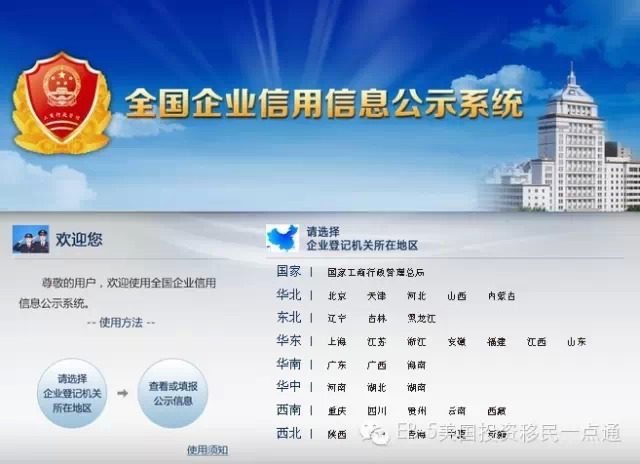【美国移民】美国移民局对中国投资者的RFE(补件要求回函)新趋势
今天EB5Sir找来的是Klasko移民律所Fankai (Oliver) Yang律师的一篇文章,关于针对中国投资者的RFE(补件要求回函)的新趋势,业内移民公司文案和投资者有必要对此了解。全文由业内朋友Dora义务翻译,特此感谢。

EB-5的RFE趋势
USCIS搜索中国的公共商业企业登记记录
2014年12月5日,USCIS(移民局)的EB-5利益相关者会议上,投资移民计划(IPO)办公室主任Nicholas Colucci提到,该机构的首要任务之一是与执法和监管组织合作,帮助防止欺诈,并且发展新的方法来进一步加强对EB-5计划的信心。根据Colucci先生所说,USCIS打算采取如下措施来加强EB-5计划的完整性:
(1)进行更多的国内和国外网站访问,以验证支持文档的合法性;
(2)利用新的商业和政府数据库;
(3)扩大欺诈检察和国家安全(FDNS)团队;
(4)给FDNS团队提供打击洗钱和欺诈的进一步培训。
尽管Colucci先生并未详尽说明新计划的细节,但我们认为这些举措将不可避免地导致对合法资金来源和转账路径文档的RFE(补件要求回函)的增加。事实上,自2014年末以来,投资者就面临了对合法资金来源和转账路径文档要求REF数量的显著增长。仔细看那些最近的REF,表明USCIS确实采取了新的措施来验证EB-5投资者提交的资金来源文档。
随着中国投资者占EB-5投资者总额的80%以上,大多数最近的REF都是针对中国投资者,这也就不足为奇了。本文着重介绍一种涉及中国投资者的新RFE趋势。在以后的文章中,我们将讨论其他几种趋势。
最有趣的一个RFE趋势涉及了的是作为企业主的中国投资者。在一个案例中,申请人通过房屋抵押贷款获得她的EB-5投资资金,并试图证明她用来购买房产的资金来源于她的工资收入。为了证明她的工资收入,申请人提交简历和雇佣证明。在RFE中,USCIS表示他们进行了公共记录的搜索,搜索结果表明申请人是她目前雇主的股东。USCIS指出,她提供的收入证明不能支持,她对于现有公司的出资入股,因此USCIS要求她提供进一步的证据。
USCIS在RFE中提到的公共记录,可能来自(中国)全国企业信用信息公示系统(“信息公示系统”),这是由中华人民共和国国家工商总局在2014年10月根据《企业信息公示暂行条例》正式推出的一个在线数据库网站。可以通过选择地点和输入公司的名称或公司的注册号进行搜索。在搜索结果页面上会披露广泛的关于公司的信息,包括成立日期、法人代表、注册资本、现有股东的列表和每个股东各自的股权。在某些情况下,记录还列出了股东权益的变化。
然而,我们注意到使用信息公示系统来验证资金来源文件并非没有缺陷。如果在投资者的资金来源文件中的公司名称不是公司的注册名称,那么按照公司名称进行搜索可能会产生不准确的结果。此外,由于在全国各地报告标准不同,有时是找不到股东权益变化的。在投资者最初用少量的资本建立公司,但后来大大增加注册资本的情况下,这可能会造成很大的混乱。此外,由于法律只要求企业提交的年度报告,能反映前一年1月1日至6月30日的股权变化,所以股东权益的变化记录虽然存在,但也可能是过时的。因此,它可能需要长达一年半的时间在信息公示系统中更新股权的变化。
当我们为USCIS实施新措施,加强程序的完整性,防止欺诈而欢呼时,我们还是要提醒USCIS不要完全依赖信息公示系统,因为它可能包含不完整或不准确的信息。对于中国同时也是企业主的投资者,审核在信息公示系统中公司的公开信息披露页与实际情况不一致的地方是十分必要的。同时,在任何情况下,都需要收集必要的文件来说明购买公司股份的资金的合法来源。
原文
作者:Fankai (Oliver) Yang,原文网站:www.klaskolaw.com。
EB-5 RFE Trend: USCIS Searches of Public Business Registration Records in China
March 31st, 2015 by F. Oliver Yang
In the December 5, 2014 USCIS EB-5 Stakeholder Engagement, Immigrant Investor Program (IPO) Chief Nicholas Colucci mentioned that one of the agency’s top priorities is to collaborate with law enforcement and regulatory organizations to help prevent fraud and develop new ways to further enhance confidence in the EB-5 program. According to Mr. Colucci, USCIS intends to strengthen program integrity by (1) conducting more site visits both domestically and abroad to validate supporting documentation; (2) utilizing new commercial and government databases; (3) expanding the Fraud Detection and National Security (FDNS) team; and (4) providing additional training to the FDNS team on combating money laundry and fraud.
While Mr. Colucci did not elaborate on the details of the new initiatives, we think they will inevitably lead to an increase of Requests for Evidence (RFE) on lawful source and path of funds documentation. In fact, investors have witnessed a sizable increase in the number of RFEs on source and path of funds since late 2014. A close look at those recent RFEs suggests that USCIS has indeed been implementing new measures to validate source of funds documentation submitted by EB-5 investors.
As China accounts for more than 80% of the total EB-5 investors, it comes as no surprise that most of the recent RFEs are directed at Chinese investors. This article focuses on one of the new RFE trends concerning Chinese investors. We will discuss a few others in later articles.
One of the most interesting RFE trends involves Chinese investors who are also business owners. In one case, the petitioner obtained her EB-5 funds by taking out a home equity loan, and sought to demonstrate that the funds she used to purchase the property derived from her employment income. In order to prove her income, the petitioner submitted her resume and employment certificates. In the RFE, USCIS indicated that it conducted a public record search on its own, which revealed that the petitioner is a shareholder of her current employer. USCIS indicated that the capital contribution she made to establish the company is not supported by the income certificates provided by the petitioner and requested further evidence.
The public record mentioned in the RFE likely came from the National Enterprise Credit Information Public Disclosure System (“Public Disclosure System”) [1], which is an online database officially launched by the State Administration for Industry & Commerce of the People’s Republic of China pursuant to Interim Regulation on Enterprise Information Disclosure [2] in October 2014. On the website, searches can be made by selecting the locality and entering the name of the company or the company’s registration number. A wide array of information about the company is available on the company’s information disclosure page, including date of establishment, legal representative, registered capital, list of current shareholders, and each shareholder’s respective equity interest. In some instances, the record also lists changes in equity interests.
However, we note that using the Public Disclosure System to verify source of funds documents is not without flaws. If the name of the company in the investor’s source of funds documents is not the registered name of the company, a company name search would likely produce inaccurate results. Additionally, because of different reporting standards in localities across the country, changes in equity interests are sometimes not available. This could potentially cause great confusion in cases where the investor initially contributed a small amount of capital to establish the company but later greatly increased the registered capital. Further, where the changes in equity interests are made available, it may also be out of date as the law only requires the enterprise to submit its annual report reflecting equity interest changes for the previous year between January 1 and June 30. As a result, it may take up to a year and a half to update changes in equity interest in the Public Disclosure System.
While we applaud USCIS for carrying out new measures to strengthen program integrity and prevent fraud, we also caution USCIS not to solely rely upon the Public Disclosure System as it may contain incomplete or inaccurate information. For Chinese investors who are business owners, it is imperative to review the company’s information disclosure page in the Public Disclosure System for any inconsistency, and collect necessary documents to show the lawful source of the funds used to acquire the company equity in all types of cases.
[1] http://gsxt.saic.gov.cn/
[2] http://www.lawinfochina.com/display.aspx?id=17635&lib=law
